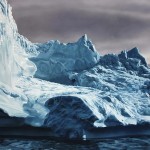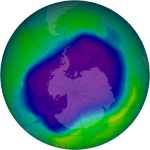That’s pretty much the message of new study in Geophysical Research Letters. Large deposits of methane hydrates, i.e. methane ice, occur naturally in the seafloor sediments of the Arctic continental shelf between 300-600 meters. This is dominate reservoir for methane due to the large area and extremely low temperatures.
The continued and predicted warming of the oceans would cause methane hydrates to melt releasing massive quantities of methane gas, upwards of 16,000 metric tons of methane each year. Fueled by this increase in a food source, microbes that thrive on methane would increase. Their increased respiration would strip the water of oxygen, creating dead zones, and produce carbon dioxide that would acidify waters. These microbial blooms would also remove nutrients from the water depriving other organisms, like phytoplankton thus altering carbon cycling.
So in summary everything is f—-d.
Elliott, S., Reagan, M., Moridis, G., & Smith, P. (2010). Geochemistry of clathrate-derived methane in Arctic ocean waters Geophysical Research Letters, 37 (12) DOI: 10.1029/2010GL043369






Yeah, and you didn’t even mention that methane itself is a super-potent greenhouse gas. :(
We need to get estimates of degree and extent of the oceans affected. We already are causing dead zones due to run off, perhaps the scale will not be large. There is evidence that this occurred in massive scales in the past, so we need to find out more about these events. Fortunately life survived. Unfortunately, we don’t know how much stress life experienced during these previous events. Anyway, however one looks at this situation-and so many others, it is not a pretty picture.
With all of this information at our disposal, paired with the media’s coverage, and Governor Crist, would you or your family feel safe being in the Gulf waters, particularly around Pensacola and Destin? I wonder if we have place too much emphasis on personal pleasure and tourism.